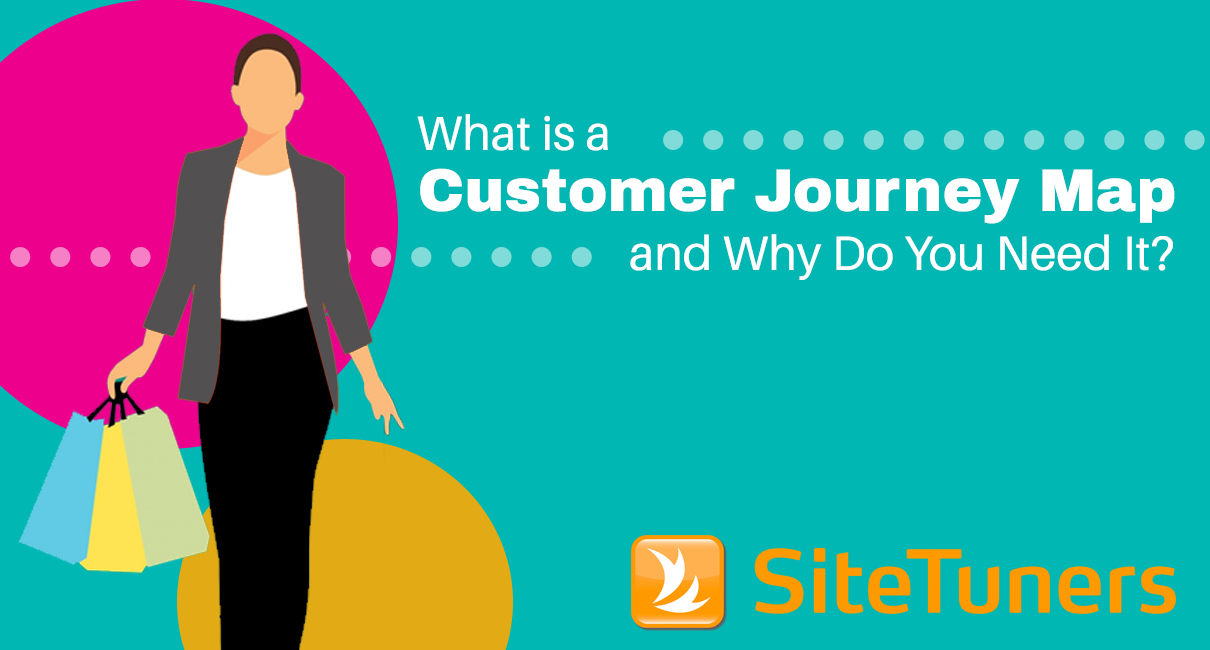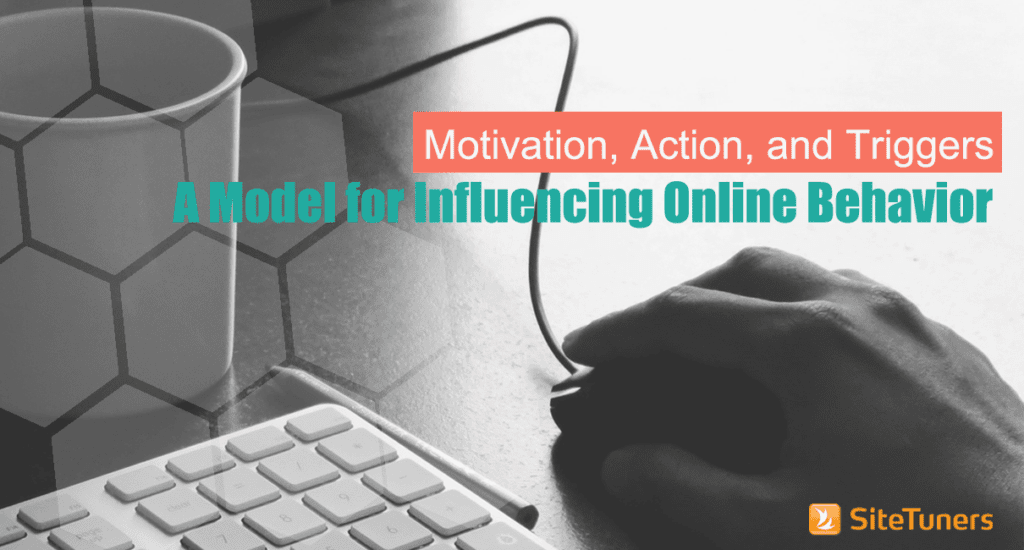
For a lot of other organizations, this is simply not possible.
People get to the site researching something, comparing product sets, checking prices, looking at warranty information, and generally performing a lot of actions that do not involve a “Buy Button.”
The experience needs to be good across the board. So, you need to think about how good you can make the user experience across all the different touchpoints of your website, and across all the different types of intentions users will have.
Two things can help you here:
1. A framework to understand user intentions
2. A journey map
AIDA – A framework to understand user intentions
Attention
When you have display ads on other websites or paid search campaigns, the idea is to try and get people onto your site. This means you need to be as relevant as possible for searches that people make a lot; your ads need to be relevant to the topics people care about on other sites.
For when you get people to actually land on your site, you need to make sure you make their attention count:
- Reduce the page load time as much as you can, so you don’t squander user attention.
- Feature important information or product groups above the fold. If users can’t find your offerings, they essentially do not exist.
- Prioritize important elements. Users follow an F pattern for reading – they move from top to bottom, from left to right. Position your elements with this knowledge in mind.
Interest
Compared to the “loudness” of the attention phase, quiet focus is what you need to design for the interest phase. You need to think of a couple of things to make this phase work:
- Understand who the visitor is
- Understand what the visitor is trying to accomplish
The best thing you can do during this phase is to get out of the user’s way. The visitor needs to find what he or she is looking for as efficiently as possible, without your site interfering with the user’s journey.
Desire
If the visitor spends enough time on your site to like your products, the website tasks become slightly different. At this point, you need to ensure that the visitor trusts you enough to transact with you. That entails doing a few things:
- Make the trust symbols prominent on the website.
- Give the visitors agency. Make things like shipping fees clear, and give users tools like price comparison tools, so they have everything they need to make a decision.
Action
Even when visitors really like your products, even when your price points are okay with users, you need to ensure the site makes users take action.
There are a few things you need to do to make that happen:
- Ensure that your cart is distraction-free. If users are willing to transact with you, the last thing you want is to have anything take them out of the cart experience.
- Do not surprise the visitor. Put all applicable charges before they get to the checkout, so they’ll trust you enough to transact with you at the tail end of the process.
- Put the number of stock items left or the time left on the offer to ensure that those who are willing to act have the proper motivation to act now rather than later.
If you think about the AIDA phases as you curate your web experience, you’re more likely to get the user experience right.
Customer journey map – A smart way to ensure success across the different touchpoints
Once you have an understanding of the user’s decision-making process, you need to ensure that they map well to what happens on the website.
Understanding that the user is in the attention, interest, desire, or action phase helps you with the basic elements that should be on the website and what they should achieve. However, to maximize gains, you need to think about how happy and successful they are across the different digital touchpoints, and across all devices.
This is where a journey map comes in.
A journey map has three basic components:
- The “persona” or role that a user has, along with the tasks
- The stage the user is in, whether it’s AIDA or the specific component of your website being used
- An indicator of how well that specific stage is serving the user, from the emotions a user has for that stage to the opportunities that can be used to improve components of that stage
Let’s tackle these individually.
 1. Personas/ Roles and Tasks
1. Personas/ Roles and Tasks
“Personas” in marketing have a mixed reputation. Some marketers really, really believe in them, and others think they are fluff and professionals should focus on other things like roles instead.
You don’t need to “buy in” to personas to create journey maps. You can believe or doubt their marketing efficiency and still conduct worthwhile journey mapping activities. For this purpose, a persona is a set of characteristics for a common set of audiences, and the characteristics can be very sparse.
At minimum, you need what a person typically tries to achieve on the site, and if you have a complex business, the “role” the user has (e.g. “buyer,” “influencer,” “researcher,” or whatever else influences how your audiences will consume content).
Separating out 3 or 4 personas or roles can help you focus on what to improve, and gives you a clear prioritization of the order they need to be fixed.
When you know the tasks and the roles, you can assess which part of the customer journey impacts the largest audiences, and the touchpoints that affect the company’s bottom line the most.
2. Stages

The idea is that you’ll know your site well enough to think through which parts serve which stages and user intentions. Maybe your product selector is not so great at getting mobile users to check the catalog, but your desktop users are very happy with the cart experience. Maybe the educational pages tablet users land on are not very easy to consume, but if they get to your product categories, everything “clicks.”
Separating out the stages and touchpoints allows you to assess each one individually, and helps you focus on areas to improve.
3. Indicators and Opportunities

One way to do this is to measure satisfaction for each of the touchpoints. You can add a line graph that takes a satisfaction measurement from your survey tool to map out how well the stages are serving the potential customers. You can also conduct specific journey-map centric activities like interviews if you don’t have a web survey tool running.
Once you see where the high and low points are, you can isolate the low-performing touchpoints and form theories about how you can improve those sections. Those will form your opportunities section of the customer journey map.
The opportunities section will give you ideas you can test to improve the website.
Combining AIDA and Customer Journey Maps
When you have both the AIDA framework applied to website analysis and the customer journey map available to isolate and improve the user experience, you’ll be able to improve the site in new ways.
Internal teams can work together on broken touchpoints that they handle. The visual of the failed experience can help get the internal teams to break down silos and work together to fix the weakest areas of the website.
How the company talks can shift from company-centric to user-centric. Once the common problems for users are available to review, the organization can talk about the problems the way the users talk about the problems.
The weakest areas of the website get exposed. Once the low satisfaction touchpoints get isolated, the company can make a push to fix the broken areas that a lot of users need.
Having a customer journey map available for all teams can drive action in ways that just reviewing web analytics and survey tools just can’t match. Adding this to your toolbox can help you improve the user experience faster than competitors can.
Take your conversions to the next level.Learn how our experts at SiteTuners can help kickstart your conversion rate optimization process or get better results from your CRO efforts. Give us 30 minutes, and we’ll show you a roadmap to your digital growth! |





 1. Personas/ Roles and Tasks
1. Personas/ Roles and Tasks

